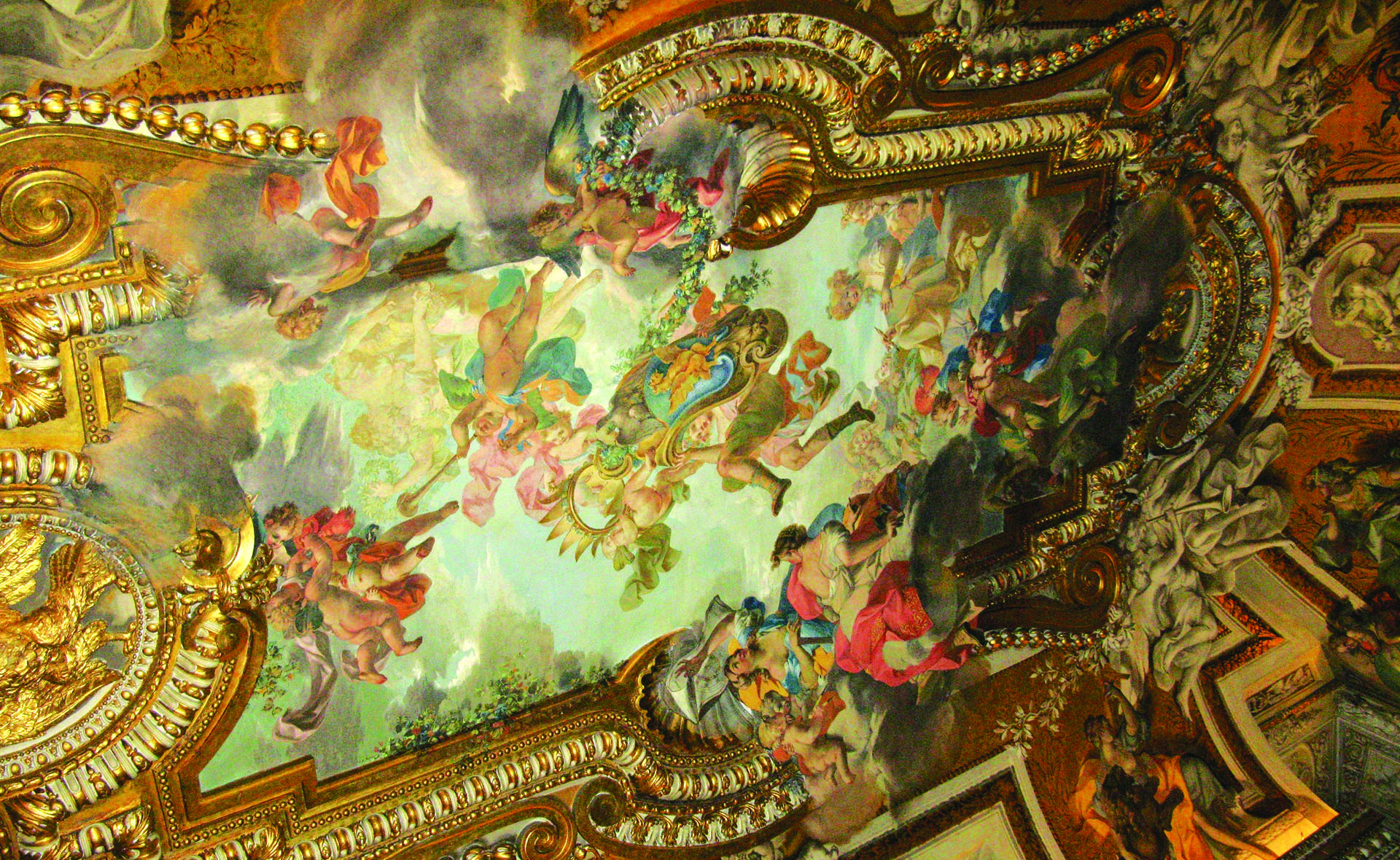Located a few steps from Piazza San Lorenzo in Lucina, Palazzo Borghese, with its characteristic cymbal-shaped architecture, has been for decades one of the privileged Grand Tour destinations.

Defined by the archaeologist Giuseppe Antonio Guattani one of the «four wonders of Rome», this palace was built in 1560. It took its current form only in the following century, when it was donated by Cardinal Camillo Borghese, the future Pope Paul V, to his brothers.
The courtyard was designed by architect Flaminio Ponzio, with 96 columns made of red and onion granite, and its façade on via di Ripetta, with the loggia named the “harpsichord keyboard”.
The nymphaeum garden, unique in the Baroque Rome, is decorated with orange and small boxwood trees. It is also crowned by three spectacular wall fountains, by Carlo Rainaldi, inhabited by mythological presences, eagles and dragons, the latter represent the Borghese’s heraldic symbol.
Opposite to the garden stands the Cembalo Gallery, which is accessed by a semi-circular staircase surrounded by a precious polychrome mosaic. Since 2013, the environment, which is subdivided into 5 communicating rooms having luxuriously frescoed ceilings, has hosted art exhibitions and “fine art” photography exhibitions.
It thus returned to its original function: in the 18th century, in fact, with the name of Galleria Terrena, it housed the prestigious collection of Cardinal Scipione Caffarelli-Borghese (now in Galleria Borghese) and was the destination of the protagonists of the Grand Tour.
The Sala dell’Udienza (Audience Hall), in which the prince used to receive his guests, is the biggest room: in the magnificent fresco decorating the vault, the Triumph of the Borghese and the Arts of Ermenegildo Costantini, completed in 1774, the family crest is crowned between cherubs and personifications of the Arts and Sciences.
Info: www.galleriadelcembalo.it.
